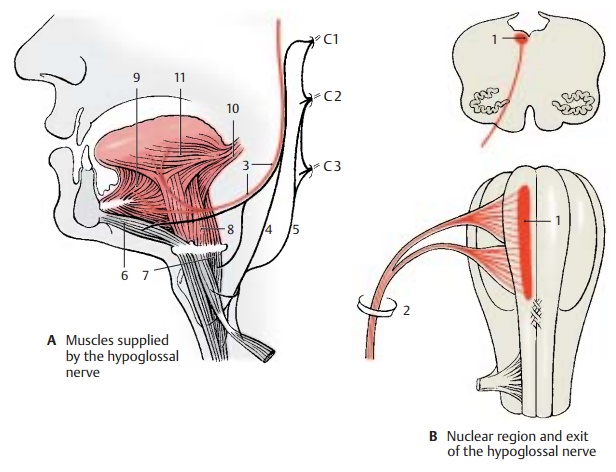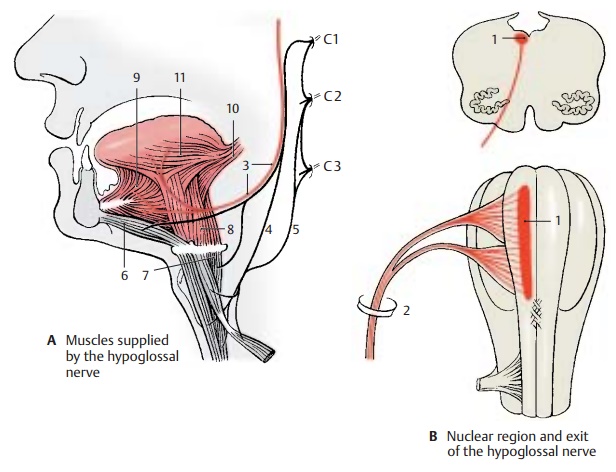Chapter: Human Nervous System and Sensory Organs : Brain Stem and Cranial Nerves
Hypoglossal Nerve - Cranial Nerves (V, VII - XII)

Cranial Nerves (V, VII – XII)
Hypoglossal Nerve (A, B)
The twelfth cranial nerve is an exclusivelysomatomotor nerve for the
tongue muscles.Its nucleus, the nucleus
of the hypoglossalnerve (B1),
forms a column of large multi-polar neurons in the floor of the rhomboid fossa
(trigon of hypoglossal nerve). It
consists of a number of cell groups, each of which in-nervates a particular
muscle of the tongue. The nerve fibers emerge between pyramid and olive and
form two bundles that then combine into a nerve trunk.
The
nerve leaves the skull through the canalof
the hypoglossal nerve (B2) and
descendslaterally to the vagus nerve and the internal carotid artery. It forms
a loop, the arch of thehypoglossal nerve
(A3), and reaches the rootof the
tongue slightly above the hyoid bone between the hypoglossal muscle and the my-lohyoid
muscle, where it
ramifies into termi-nal branches.
Fiber bundles of the first and
second cervi-cal nerves adhere to the hypoglossal nerve. They form the deep cervical ansa (branches for the
lower hyoid bone muscles) by branching off again as superior root (A4) and
combining with the inferior root (A5) (sec-ond and third cervical nerve).
The cervical fibers for the geniohyoid
muscle (A6) and the thyrohyoid muscle (A7) continue to run inthe hypoglossal nerve. The hypoglossal nerve
gives off the lingual branches to
the hypoglossal muscle (A8), the genioglossal muscle (A9),
the styloglossal muscle (A10),and to the intrinsic muscles of
the body of the tongue (A11).
Innervation of the tongue muscles is strictly ipsilateral.

Clinical Note: Injury to the hypoglossal
nervecauses hemilateral shrinkage of the tongue (hemi-atrophy). When the tongue is stuck out, it turns tothe
affected side because the genioglossal muscle, which moves the tongue to the
front, dominates on the healthy side.
Related Topics